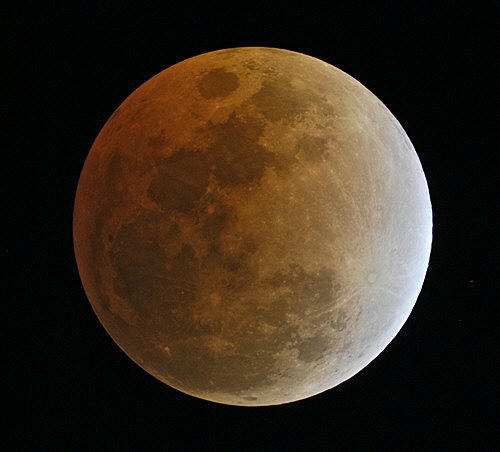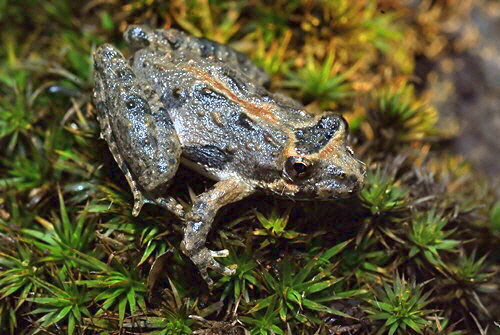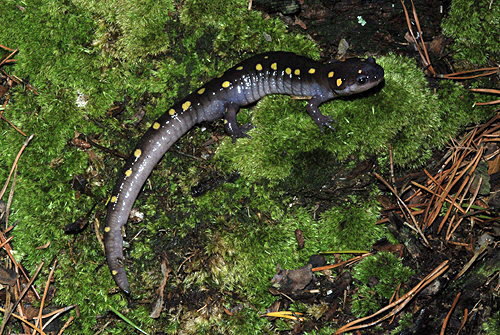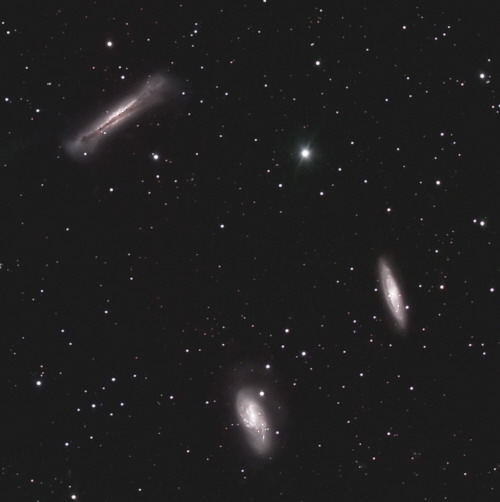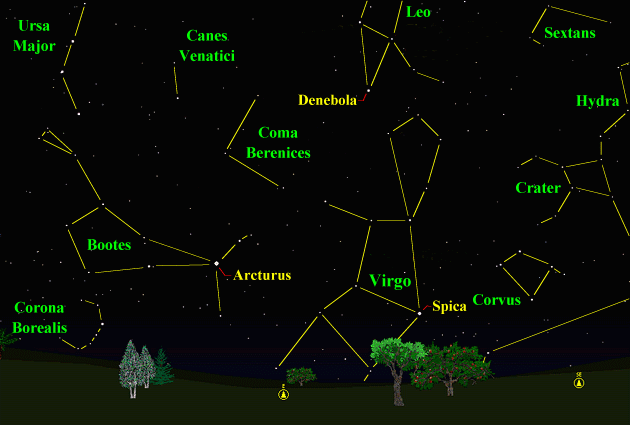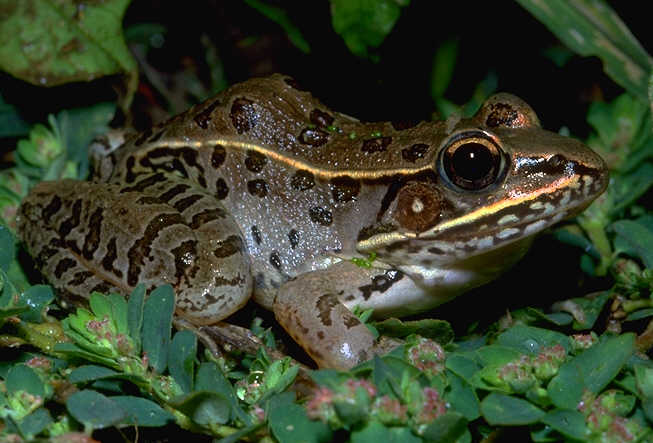The purpose of this feature is to give scout leaders, educators and naturalists an idea of some of the natural events coming up each month. We will try to cover a variety of natural events ranging from sky events to calling periods of amphibians, bird and mammal watching tips, prominent wildflowers and anything else that comes to mind. We will also note prominent constellations appearing over the eastern horizon at mid-evening each month for our area for those who would like to learn the constellations. If you have suggestions for other types of natural information you would like to see added to this calendar, let us know!. Note: You can click on the hyperlinks to learn more about some of the featured items. To return to the Calendar, hit the "back" button on your browser, NOT the "back" button on the web page. All charts are available in a "printer friendly" mode, with black stars on a white background. Left clicking on each chart will take you to a printable black and white image.
Notes and Images From February 2008
February 20th was cloudy throughout the day. That night, trying to be optimistic, we set up the 6" refractor for the total eclipse of the moon. Right at mid-eclipse, the sky cleared for about 15 minutes and I quickly took some images. The moon did not pass through the center of the umbra (the darker part of the earth's shadow) and this resulted in a large difference in brightness across the lunar surface, even at mid-eclipse. We savored our unexpected view of the copper-colored moon, with bright Regulus and Saturn keeping it company. We photographed this Northern Cricket Frog the day before the eclipse, and the color of the stripe down its back seemed to foreshadow our good luck on the eclipse. Only about 5/8" long, these tiny frogs come in a variety of beautiful color patterns. Listen for their calls, which sound like marbles tapped together. On February 18th, we checked funnel traps placed in a small pond and found 58 Spotted Salamanders in four traps! The previous evening had been warm and rainy, and the conditions were ideal for mating. We photographed the salamander at right and then released them all. The galaxies M65, M66 and NGC 3628 form a pretty trio in Leo. I imaged the group on February 9th. The edge-on galaxy NGC 3628 (top left) has been disrupted by gravitational interaction with M66 (bottom left) and M65. A faint tidal tail extends to the left from NGC 3628. M65 & M66 can be picked up with binoculars on dark nights as faint smudges. NGC 3628 has a lower surface brightness and is harder to see. As all three galaxies are thought to be about 35,000,000 light-years distant, we see this family portrait as it was 35,000,000 years ago. I once had a memorable look at NGC 3628 at Pickett State Park on a night of superb transparency. We were camping, and I could see the unusual shape and the odd asymmetrical dust lane of the galaxy though my 60mm aperture, 20 power spotting scope that I use for birds.
Sky Events for March 2008: Spring officially begins in the northern hemisphere on March 20th at 12:48am CDT. Evening Sky: This month is a great chance to see Saturn. The ringed planet is well placed for viewing all month long. Look for it near the "sickle" of the constellation Leo below the bright star Regulus. Just about any small telescope will give you a great view of the rings. Mars is high overhead at dusk in the constellation Gemini. It continues to fade. Morning Sky: Jupiter is already fairly high in the eastern sky at dawn. The first few days of March are a great time to spot the elusive planet Mercury. Few people take the time to track down Mercury, and the great astronomer Nicolaus Copernicus wrote that, to his intense regret, he never succeeded in spotting the diminutive planet. Try about 30 minutes before sunrise. Venus will be low in the eastern glow, and Mercury is above and to the right of it, a little over a finger's width at arm's length. Venus is quite a bit brighter, so use it to guide you to fainter Mercury. Binoculars will make Mercury easier to spot. You'll want a fairly unobstructed eastern horizon. All times noted in the Sky Events are for Franklin, Tennessee and are Central Standard Time. These times should be pretty close anywhere in the mid-state area.
Constellations: The views below show the sky looking east at 9:30pm CST on March 8th. The first view shows the sky with the constellation outlines and names depicted. Star and planet names are in yellow. Constellation names are in green. The second view shows the same scene without labels. The bright star Arcturus, in Bootes, the Herdsman, makes its appearance this month in the early evening sky, a sure sign that Spring is here. Below Bootes is Corona Borealis, the Northern Crown. In the southeast, Virgo clears the horizon this month along with Corvus, the Crow. To download each chart in a format that will not drain your printer of black ink, simply click on each chart.
On Learning the Constellations: We advise learning a few constellations each month, and then following them through the seasons. Once you associate a particular constellation coming over the eastern horizon at a certain time of year, you may start thinking about it like an old friend, looking forward to its arrival each season. The stars in the evening scene above, for instance, will always be in the same place relative to the horizon at the same time and date each March. Of course, the planets do move slowly through the constellations, but with practice you will learn to identify them from their appearance. In particular, learn the brightest stars (Like Arcturus and Denebola in the above scene looking east), for they will guide you to the fainter stars. Once you can locate the more prominent constellations, you can "branch out" to other constellations around them. It may take you a little while to get a sense of scale, to translate what you see on the computer screen or what you see on the page of a book to what you see in the sky. Look for patterns, like the stars of the "Big Dipper." The earth's rotation causes the constellations to appear to move across the sky just as the sun and the moon appear to do. If you go outside earlier than the time shown on the charts, the constellations will be lower to the eastern horizon. If you observe later, they will have climbed higher. As each season progresses, the earth's motion around the sun causes the constellations to appear a little farther towards the west each night for any given time of night. If you want to see where the constellations in the above figures will be on April 8th at 9:30pm CST, you can stay up till 11:30pm CST on the March 8th and get a preview. The westward motion of the constellations is equivalent to two hours per month. Sky Publishing has just come out with a beautiful and compact star atlas, Sky & Telescope's Pocket Star Atlas. It is destined to become a classic, and is a joy to use at the telescope. A good book to learn the constellations is H. A. Rey's
classic,
The Stars, A New Way to See Them. Rey's depictions of the
constellations and witty commentary are terrific. A good general reference book on astronomy is the Peterson
Field Guide,
A Field Guide to the Stars and Planets, by Pasachoff.
The book retails for around $14.00. Starry Night has several software programs for learning the night sky. Visit the Starry Night web site at www.starrynight.com for details.
Amphibians:
With the unusually warm temperatures this year, some species are calling earlier than we normally hear them. Southern Leopard Frogs, Southeastern Chorus Frogs and Spring Peepers began calling in January. I heard American Toads the last few days of February. Look for their eggs, and for the egg masses of Wood Frogs, Spotted Salamanders and Tiger Salamanders. In West Tennessee, Northern Crawfish Frogs give their loud snoring calls in early March. At higher elevations, listen for Mountain Chorus Frogs. Towards the end of the month listen for Pickerel Frogs doing their "yeeooow" call. Remember that on mild nights you may find frogs and toads out foraging that you do not hear until later in the season, and the record-breaking temperatures we have been having may yield some very interesting early records. Listen for early treefrogs, like Cope's Gray Treefrog, and for early Northern Cricket Frogs.
Birds:
This time of year is prime time to find owl nests. Since the leaves have not yet appeared on most trees, you can sometimes spot the old stick nests that the owls often use for nesting. Observe only at a distance and do not try to approach a nest, both for your own safety and to keep from flushing the owl off the eggs. The adult's absence, if it flushes, can allow the eggs to rapidly get too cold, and may doom the nest. Look and listen for the young Great Horned Owls. If you find a young owl on the ground, leave it there! Its parents will feed it on the ground. Well-meaning people sometimes take young owls they find on the ground to wildlife rehabilitation centers, thinking the young owls have been abandoned. This is not necessary, and it may prevent the owl from ever successfully living in the wild. Don't do it.
Recommended: Bird Finding in Tennessee, Michael Lee Bierly. A classic guide to finding birds in Tennessee. The Sibley Guide to Birds, David Allen Sibley The Sibley Guide to Birds of Eastern North America, David Allen Sibley An inexpensive guide for beginners is the Golden Guide for Birds.
Archives (Remember to use the back button on your browser, NOT the back button on the web page!) Natural Calendar February 2008 Natural Calendar December 2007 Natural Calendar November 2007 Natural Calendar September 2007 Natural Calendar February 2007 Natural Calendar December 2006 Natural Calendar November 2006 Natural Calendar September 2006 Natural Calendar February 2006
Natural Calendar
December 2005
Natural Calendar
November 2005
Natural Calendar
September 2005
Natural Calendar
February 2005
Natural Calendar
December 2004
Natural Calendar
November 2004
Natural Calendar
September 2004
Natural Calendar
February 2004
Natural Calendar
December 2003
Natural Calendar
November 2003
Natural Calendar
September 2003 Natural Calendar February 2003 Natural Calendar December 2002 Natural Calendar November 2002 Nature Notes Archives: Nature Notes was a page we published in 2001 and 2002 containing our observations about everything from the northern lights display of November 2001 to frog and salamander egg masses. Night scenes prepared with Starry Night Pro software All images and recordings © 2008 Leaps
|
